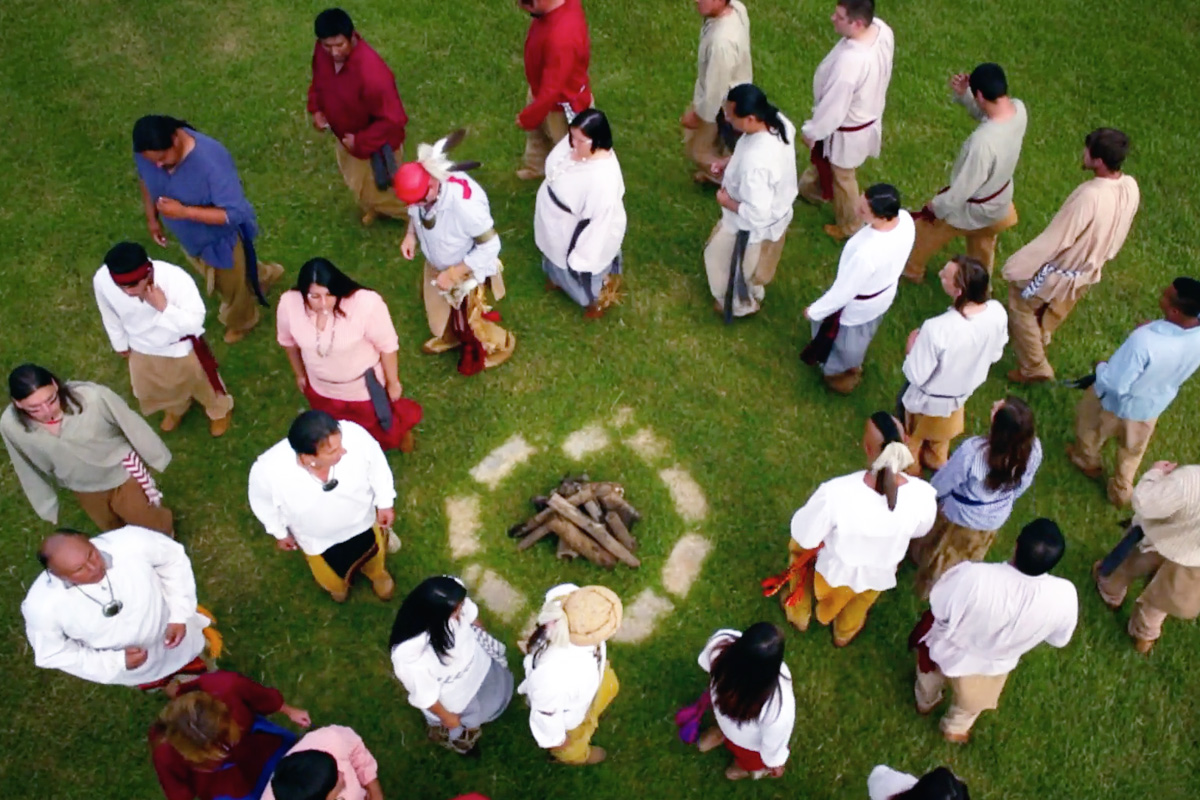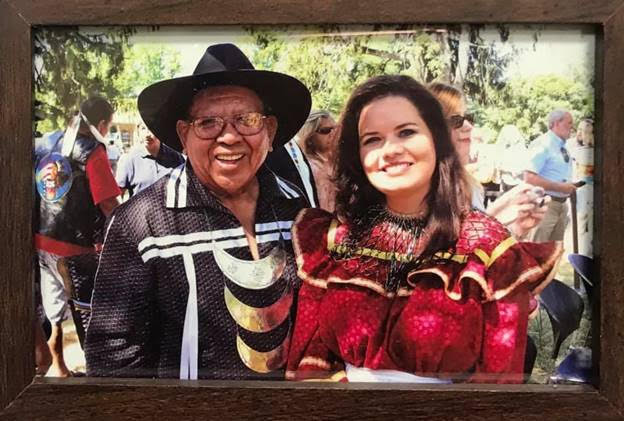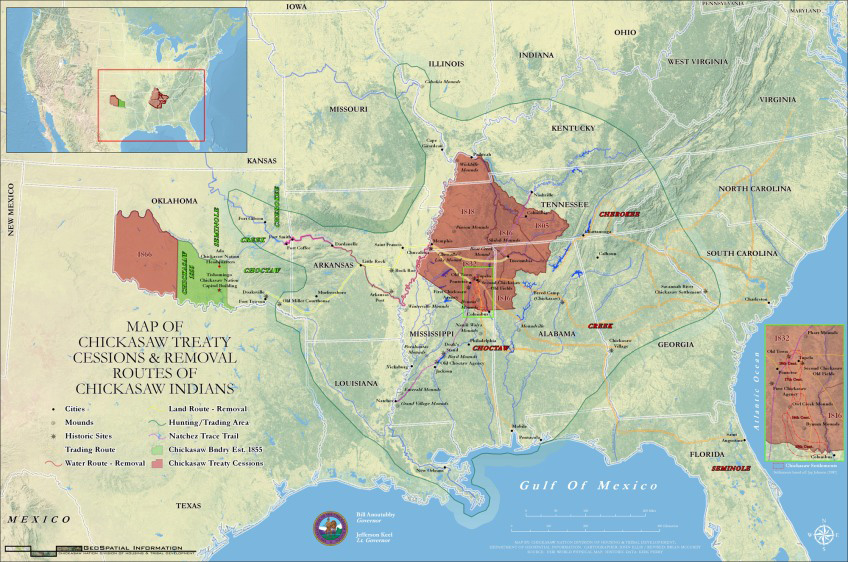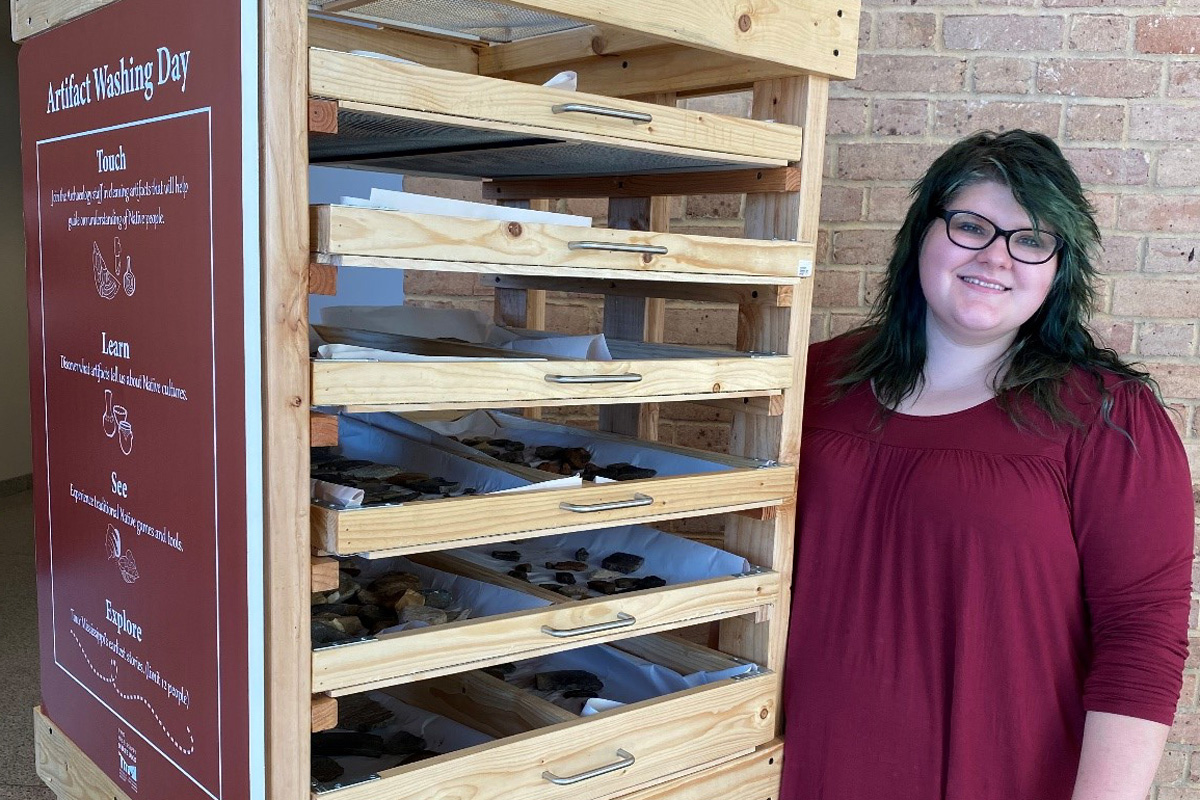
- Details
- By Aliyah Veal
JACKSON, Miss. — After its archeology collection moved recently to the nearby Two Museums in downtown Jackson, the Mississippi Department of Archives and History made a grim and disturbing discovery. Boxes filled with archeological artifacts contained human remains that were, to date, unreported to the federal government as law required.
“When I realized that we had so many that had not been reported, we decided to do a total collections inventory. Basically wipe the slate clean and start all the way over from the beginning to determine the extent of our human remains, of the ancestors we care for, and that process is still ongoing,” MDAH Director Megan Cook told the Mississippi Free Press.
In March 2021, the Mississippi Department of Archives and History announced that it has repatriated 403 Native American remains and 83 lots of burial objects to the Chickasaw Nation, the largest return of human remains in the state’s history and the first for the department.
The repatriation started a year ago in January 2020 and is ongoing as the department is about halfway through the collections inventory process, Cook said. What contributes to the lengthy process is the large number of collections and matching the funerary items with the remains, she said.
Editor's Note: This article was first published by the Mississippi Free Press. Used with permission. All rights reserved.
The issue of proper repatriating of ancestors’ remains is a sensitive one for today’s descendants of the millions of people who populated current-day America when colonists started showing up and taking property and resources. Many of those remains ended up in boxes and rooms in museums and state facilities such as the Mississippi Department of Archives and History, sometimes in storage and in other instances studied, instead of with descendants where they belong.
The State of Mississippi is now trying to make it right with the Chickasaw Nation, whom the United States forced off their lands and out of Mississippi after the Treaty of Doaksville was signed in 1837.
‘Chiksa’, Corn, & Culture’ of Native Mississippians
After praying to their Creator Aba’ Binni’li’, Chickasaw hopayi—prophets—revealed in a vision that brothers Chiksa’ and Chahta were to lead their ancestors from the West to the East to land now known today as Mississippi. The people who followed the Chiksa’ are now known as Chickasaws, and those who stayed with Chahta are now called Choctaws.
“The Chickasaw people had a highly developed social and political structure. This structure remains deeply interwoven into Chickasaw culture to this day,” Chickasaw Nation Director of Historic Preservation & Repatriation Amber Hood told the Mississippi Free Press. “There has always been one primary tribal leader who held the title of Minko, meaning leader in the Chickasaw language.”
Corn was a staple to Chickasaw diet, often grown with beans and squash—long called the “Three Sisters” because each crop supported the others just like sisters do. Chickasaws cooked Pashofa corn, which is cracked corn, at gatherings and ceremonies.
The nation participated in stomp dancing, an integral part of the culture, and artisans would make drums, rattles, turtle shell shakers and deer shakers during dances.
The Chickasaw interacted with other southeastern Indian tribes, working together to provide, protect and care for their communities. They hunted, gathered, traded and interacted with others throughout the southeast to support their families.

“Trade fairs were very common along the major waterways, including the Mississippi and Tombigbee Rivers. At these trade fairs, our Chickasaw ancestors and neighboring tribes brought vegetables, meats, furs, bows and arrows, clothing, and many other items to trade and barter in exchange for new, desired items,” Hood said.
The Chickasaws stayed in Mississippi until the Indian Removal Act that Congress signed in 1830, giving the federal government the power to exchange tribal homelands for land in Indian Territory. The removal was supposed to be voluntary and peaceful, but the Chickasaw and other tribes did not want to leave their homeland where they had lived for centuries.
“We ceded portions of our land to the United States hoping to retain control over the remaining portions. We incorporated European ways of life into our own as an attempt to co-exist with non-native peoples,” Hood said.
For their resistance, tribes were met with atrocities. The Seminole refused to leave their lands, and it resulted in decades of war and lives lost. Federal troops with bayonets forced the Cherokee into stockades with no time to gather their belongings.
“Many died in the camps prior to removal, and thousands more died of cold, hunger, exhaustion and disease during the forced Removal to Indian Territory (present-day Oklahoma), which is often referred to as the Trail of Tears,” she said.
The Chickasaw removal was different from other tribes as they saw it as inevitable and made the decision to sign a treaty, which stated that the federal government would provide them suitable land west of the Mississippi River and provide protection and supplies during the journey. But those promises weren’t kept, Hood said.

“We eventually sold our remaining lands in Mississippi and used the funds to pay for our own removal. We also purchased the right for the settlement of our people in the Chickasaw district within Choctaw Nation,” she said.
The Chickasaw were only able to leave with the possessions they could carry over the 500-mile journey, leaving behind their land, their culture and their buried loved ones.
Over time, the people and government that took their lands often claim the remains the Chickasaw and other tribes left behind as they were forced into exile. And until just over 30 years ago, it was difficult for them to reclaim their people’s remains.
Repatriation Protection Arrives in 1990
The Native American Graves Protection and Repatriation Act 1990, referred to as NAGPRA, was a result of efforts to finally do repatriation correctly. The federal law mandated that all institutions and museums receiving federal funds are required to report an inventory of human remains and funerary items.
“It’s our responsibility to contact tribes, make the national office aware of what we have, and consult with tribes to see to it that these ancestors go back to the people they originated from,” Cook said.
National NAGPRA Program Manager Melanie O’Brien told the Mississippi Free Press that before the law passed, a university, museum and, in some cases, a federal agency would excavate and then hold onto Native American remains.
“There are stories of excavations that occurred in the 1960s or 70s’ where tribal communities would watch as archeologists would excavate their ancestors, their grandmothers and grandfathers,” O’Brien said.
The Civil Rights Movement and American Indian Movement in the 1960s and 1970s spurred the movement to pass NAGPRA, O’Brien said. As a result of both those movements, Congress passed the American Indian Religious Freedom Act in 1978, which provided Indian tribes access to spiritual and religious items and practices that they were previously barred from acquiring or practicing.
“The Sun Dance was illegal in the United States after 1904 and was not legal until the act was passed. For years, Native Americans couldn’t practice the Sun Dance and other religious practices that were prohibited by federal law,” the program manager said.
“Really, the American Indian Religious Freedom Act paved the way for the repatriation act of reclaiming both ancestors and sacred items and objects that were needed to practice traditional Native American religions,” she added.
The movement continued throughout the 1970s and gained strength into the 1980s. In 1989, the Smithsonian Museum was the first subject to the law under the National Museum and the American Indian Act, which required them to repatriate Native American ancestors and objects. A year later, the Native American Graves Protection and Repatriation Act became law, mandating museums and institutions report an inventory of sacred objects and remains.
“There wasn’t a lot of opposition to NAGPRA when it was passed because of the consensus building that was done prior to the passage of the law,” O’Brien said. “That doesn’t mean that everybody was happy that the law was enacted, but in general, professional organizations, specifically scientists and museums, were supportive of the legislation.”
‘Not Here To Be Studied’
Today, the State of Mississippi is now returning buried ancestors to the Chickasaw, who have claimed all of the 403 remains MDAH has now reported. MDAH has reported 954 individuals to date.
The traditional Chickasaw method of burying their loved ones is four days after death and sometimes under the homes of the grieving family.
For repatriated remains, some tribes hold reburial ceremonies where a tribal member digs the graves by hand. “It’s typically a tribe’s wish to rebury an individual as close as possible to where they were found,” Cook said.
Due to the sanctity of the ceremony, neither the Mississippi Department of Archives and History nor the Chickasaw tribe could give details about these ceremonies. One important facet to reburying the ancestors is keeping the location of the burial of remains and funerary items and sacred objects a secret, Cook said.
“They’ll find out you buried a bunch of fancy pottery and go dig things up. I’ve seen social media posts where someone will say I’ve got the ribs to this person, and I’ve got the head,” the MDAH director said.
To alleviate that problem, Cook said they are trying to humanize the remains of these ancestors so people do not just see them as bones and science.
“(Bones and science) are big trigger words because Native Americans are like ‘this is not your study project. We’re not here to be studied. We are people, and those are our ancestors,’” she explained.
Although Ashley Stewart’s job as a bioarchaeologist is to examine and analyze remains, she never forgets the human aspect of the job, she said. As a former mortuary field school teacher, she always emphasized to her students the importance of viewing remains as human beings with full lives that should be treated with respect, she said.
“A pot might be important, but it has nowhere near the level of significance as the human body. I always strive to treat the remains with the most respect that I possibly can. Sometimes, they might have dirt on them, so we have very specific cleaning procedures we have to do, as light as possible and no water,” Stewart told the Mississippi Free Press.

Stewart examined more than 400 human remains for MDAH’s repatriation, and there is weight, she said, to knowing that she is the last person to tell their story and get it right. Part of getting it right is communicating with tribes, hearing their concerns and maintaining boundaries while working.
During the Mississippi Department of Archives and History’s repatriation process, Stewart learned a lot about some of the concerns Native American tribes had during their monthly tribal calls, she said.
“I know they don’t like taking photos, so I never take photos, but I never thought about how they would feel about the photos existing even within MDAH. They want control over how these ancestors are viewed because to them these are very sensitive remains they don’t want people to see,” Stewart said.
Stewart learned about NAGPRA during her graduate studies, and she realized how much archaeologists took advantage of the past as there are collections from the 1930s and 1940s that are just now getting repatriated. The southeast is rife with NAGPRA collections that need to be returned, she said.
“Native groups weren’t even consulted, and people just took stuff out of the ground. So learning about NAGPRA and looking at these enormous collections that we still have and have been out of the ground for 60 or 70 years, you just think, God we have got to do better,” she said.
Megan Cook said during their monthly conversations with tribal representatives, the lack of Native American representation in their museum stores was brought to their attention. Now, instead of just talking about repatriation, they’ve expanded the conversation to how they can better represent tribal groups moving forward.
“They’re looking through some of our old publications to see if we used language that we now know is disrespectful to our tribal groups,” Cook said.
State Working for Better Repatriation Communications
A new Mississippi NAGPRA website launched in April, which will have links to the department’s tribal partners’ websites, giving people direct access to learn more about their culture.
A portion of the site is also dedicated to the repatriation process, NAGPRA, what to do if a person finds human remains, who to contact, forms and policies, a volunteer and intern page, and more, Cook explained.
“What’s more is once we launch the public portion, we will have a password-protected portion of the site that is exclusively for our tribal partners. Through this password-protected site, we’ll be able to share documentation and brochures that are coming out of the museum and get tribal feedback in real time,” the director said.
The department has also gotten tribal approval to move forward with an initiative to assist with repatriations of all Mississippians removed from the state. There are other institutions that have Native American ancestors from the Mississippi Delta and Gulf Coast, and the Department of Archives and History is working with those institutions to get these ancestors repatriated to them.
“During our consultations, I think it would make everything easier for everyone if we consult all the individuals of that site instead of taxing the tribal members. If we had everything, we can see to it that they get returned,” she said.
In the last 30 years, 45% of Native American ancestral remains have been repatriated, and some experts have estimated that it will take another 200 years before all remains are returned due to the slow manner of the repatriation process, Melanie O’Brien said.
“The Mississippi Department of Archives and History is a great example of how it doesn’t need to take that long. When a museum works collaboratively with tribes, as MDAH has done, then the repatriation can be much smoother and much quicker,” O’Brien said.
The importance and necessity of repatriation is about dignity, respect and civil rights to Native Americans, who haven’t been afforded the same equality, O’Brien explained.
“I’m white. My ancestry is all white and are in graves that are not disturbed. They’re protected by state and federal laws, but Native Americans have not had that same right, and other people have not had that same right,” she said.
“The work of repatriation is really about restoring human rights and civil rights to people of Native American ancestry.”
‘Traveling Back Home’
The Chickasaw have contributed much to the landscape of Mississippi, from the ancient pictographs carved and painted on cliffs and cave walls to the earthen mounds their ancestors built by hand. Chikasha anompa, the Chickasaw language, is deeply interwoven into Mississippi’s countries, cities, towns and rivers.
To be removed in such an abrupt and violent way was very traumatic for the Chickasaw and other southeastern Indian tribes, Chickasaw spokeswoman Amber Hood said. The government also tried to deny tribes the right to self-determination in relation to their cultural identity.
“Imagine being told you cannot speak your native language, being denied the right to practice your customs and traditions, and being denied the opportunities to farm and hunt and care for your family as you once did,” Hood said.
In 1887, the Dawes Act allowed the federal government to divide communally held tribal lands into individually owned private property, drastically changing life in Oklahoma. Chickasaws had to adapt to numerous policies, societal and cultural norms in the new territory.
“While the trauma still lingers within our communities as many Chickasaws are unable to speak their language or disconnected from their culture, the same Chickasaw tenacity is still ever-so-present, which brings forth a new sense of cultural revitalization, pride and connectedness,” she said.
Through research, the Chickasaw have been able to locate specific places where their ancestors lived. Visiting those places is a sacred experience that renews their connection to the land and helps them remember who they are, Hood remarked.
“Chickasaws will always have a strong emotional and cultural connection to Mississippi. It is our Homeland,” Hood said. “When we are able to physically be present in Mississippi it is like traveling back home in time.”
To learn more about the history and culture of the Chickasaw Nation, you can visit their website at Chickasaw.tv and Chickasaw.net. The Mississippi Department of Archives and History’s repatriation work is explained on its new NAGPRA website at https://nagpra.mdah.ms.gov/.
More Stories Like This
Native News Weekly (August 25, 2024): D.C. BriefsUS Presidents in Their Own Words Concerning American Indians
Federal Court Dismisses Challenge to NY Indigenous Mascot Ban
Sen. Angus King Warns of ‘Whitewashing’ History in National Parks Under Trump Administration
Final Call for Donations as CRYP’s 2025 Toy Drive Nears the Finish Line
Help us defend tribal sovereignty.
At Native News Online, our mission is rooted in telling the stories that strengthen sovereignty and uplift Indigenous voices — not just at year’s end, but every single day.
Because of your generosity last year, we were able to keep our reporters on the ground in tribal communities, at national gatherings and in the halls of Congress — covering the issues that matter most to Indian Country: sovereignty, culture, education, health and economic opportunity.
That support sustained us through a tough year in 2025. Now, as we look to the year ahead, we need your help right now to ensure warrior journalism remains strong — reporting that defends tribal sovereignty, amplifies Native truth, and holds power accountable.
 The stakes couldn't be higher. Your support keeps Native voices heard, Native stories told and Native sovereignty defended.
The stakes couldn't be higher. Your support keeps Native voices heard, Native stories told and Native sovereignty defended.
Stand with Warrior Journalism today.
Levi Rickert (Potawatomi), Editor & Publisher
